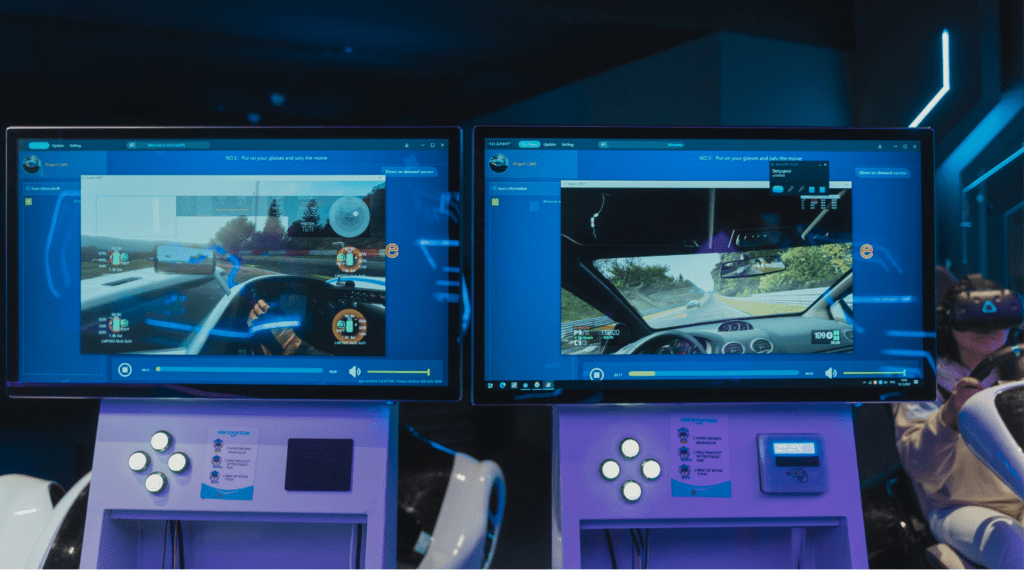The Evolution of Accessibility in Video Games
Early Days: Limited Options
In the early days of video gaming, accessibility options were minimal. Developers focused primarily on gameplay and graphics, neglecting the needs of players with disabilities.
Most games lacked basic features like subtitles or adjustable difficulty levels.
Gamers with visual impairments or limited mobility struggled to engage fully, often finding no customizable controls.
This period marked a time when the industry paid little attention to inclusivity, leaving a significant portion of the gaming community underserved.
Modern Advances: Breaking Barriers
In recent years, the gaming industry has made significant strides in accessibility. Developers now integrate features that cater to a diverse range of abilities.
Games frequently include customizable controls, enabling players to tailor inputs to their needs.
Options like:
- subtitles,
- colorblind modes,
- and adjustable difficulty settings have become standard
Examples include “The Last of Us Part II,” which features over 60 accessibility settings, and “Assassin’s Creed Valhalla,” which offers extensive customization.
These advancements reflect a growing recognition of the importance of breaking barriers, making games more inclusive for everyone.
The increasing focus on accessibility demonstrates a commitment to ensuring that all players can enjoy their gaming experiences fully.
Why Accessibility Matters in Video Games
Broadening Audiences
Expanding accessibility features in video games helps widen the player base.
When games include customizable controls, visual aids, and audio enhancements, they attract players who otherwise couldn’t participate.
Companies like Microsoft have developed adaptive controllers, making it easier for those with physical disabilities to play.
Additionally, popular games like “The Last of Us Part II” and “Assassin’s Creed Valhalla” offer various settings, ensuring a diverse audience enjoys them.
Social Inclusion and Equality
Creating accessible games promotes social inclusion and equality.
When developers focus on accessibility, they ensure players with disabilities aren’t excluded from the gaming community.
This sense of inclusion is crucial, as it fosters a welcoming environment where everyone can interact and compete on equal terms.
Implementing features like subtitles, colorblind modes, and difficulty adjustments levels the playing field, enabling a richer, more diverse gaming culture.
Key Trends in Video Game Accessibility

- Adaptive Technologies
Adaptive technologies have significantly transformed the gaming landscape. Customizable game controllers, like Microsoft’s Xbox
Adaptive Controller, enable players with physical disabilities to enjoy gaming.
These controllers accommodate various inputs, ensuring that even those with limited mobility can participate fully.
Additionally, eye-tracking technology makes gameplay accessible to players who can’t use traditional input devices, allowing them to navigate and interact using only their eyes.
High-profile games such as “The Last of Us Part II” integrate extensive settings to customize the gaming experience for individual needs. - Developer Awareness and Community Feedback
Developers prioritize accessibility now more than ever.
Game studios increasingly dedicate resources to include options like adjustable font sizes, colorblind modes, and remappable controls.
This shift comes after extensive feedback from the gaming community, highlighting the need for inclusivity.
Games like “Assassin’s Creed Valhalla” offer numerous settings to cater to diverse needs.
Regular updates and patches address accessibility concerns raised by players, ensuring that the community has an ongoing role in shaping a more inclusive gaming environment.
Studio representatives often participate in forums and surveys to understand better and incorporate the community’s needs.
Challenges in Implementing Accessibility
Technical Hurdles
Implementing accessibility in video games presents several technical challenges.
Numerous games (e.g., role-playing games, first-person shooters) involve intricate graphic designs and complex game mechanics that can make accessibility features difficult to integrate.
Customizing controls to accommodate a wide range of disabilities, from motor impairments to visual and auditory limitations, requires advanced programming and design expertise.
For instance, including options like remappable controls necessitates a thorough reconsideration of the game’s original input scheme.
Hardware compatibility poses another challenge.
While adaptive controllers like the Xbox Adaptive Controller offer substantial progress, ensuring these devices work seamlessly with various gaming platforms demands significant effort.
Continuous updates and patches are essential to maintain this compatibility over time.
Ensuring that all players, regardless of their hardware configurations, can access the same level of gameplay remains a daunting task.
Developers also face resource constraints.
Integrating robust accessibility features requires additional time and financial investment, which can be challenging for smaller studios with limited budgets and manpower.
Balancing these constraints while meeting high accessibility standards often requires innovative solutions and extensive testing.
Balancing Gameplay for All Players
- Creating an accessible game that remains engaging for all players involves delicate balancing.
- Developers must ensure that accessibility features enhance the gaming experience without giving undue advantage or simplifying gameplay for non-disabled players.
For example, enabling aim assist for players with motor impairments should maintain gameplay balance in multiplayer environments to avoid competitive disparities. - Designers must also consider sensory feedback.
For instance, providing visual cues for deaf players or haptic feedback for blind players entails redesigning parts of the game without altering its core experience.
Games like “The Last of Us Part II” accomplish this by embedding diverse sensory options that cater to different needs while preserving game integrity. - Difficulty settings require thoughtful calibration to cater to varying skill levels.
- Integrating scalable difficulty options ensures that games remain challenging for seasoned players and accessible for newcomers or players requiring adaptive assistance.
Employing user feedback, from both disabled and non-disabled players, proves essential in achieving this balance. - Maintaining narrative coherence while incorporating accessibility options represents another challenge.
Game storylines often depend heavily on auditory and visual elements, and translating these into accessible formats can be complex. - Developers must ensure that the storyline remains intact and engaging for all players, even with various accessibility features activated.
By addressing these challenges, the gaming industry can move closer to an inclusive environment where everyone can enjoy video games regardless of their physical capabilities.


 Charlie Bracegirdle seamlessly combines his passion for gaming with his role at Infinity Game Saga, where he is both a dedicated gamer and a prominent content creator. As an integral member of the team, Charlie brings a wealth of experience and a deep understanding of the gaming industry to his work. His articles and content cover a broad spectrum of gaming topics, from detailed reviews and insightful industry analyses to the latest trends and upcoming releases.
Charlie’s unique perspective, shaped by his own extensive gaming experiences, allows him to engage with readers in a meaningful way. His writing not only informs but also entertains, providing a blend of professional insight and personal enthusiasm. Whether he's exploring new game mechanics, dissecting game strategies, or sharing his thoughts on the future of gaming, Charlie's contributions make a significant impact on the Infinity Game Saga community. Through his work, he bridges the gap between gamers and the evolving landscape of the gaming world, enhancing the experience for all who follow his updates and analyses.
Charlie Bracegirdle seamlessly combines his passion for gaming with his role at Infinity Game Saga, where he is both a dedicated gamer and a prominent content creator. As an integral member of the team, Charlie brings a wealth of experience and a deep understanding of the gaming industry to his work. His articles and content cover a broad spectrum of gaming topics, from detailed reviews and insightful industry analyses to the latest trends and upcoming releases.
Charlie’s unique perspective, shaped by his own extensive gaming experiences, allows him to engage with readers in a meaningful way. His writing not only informs but also entertains, providing a blend of professional insight and personal enthusiasm. Whether he's exploring new game mechanics, dissecting game strategies, or sharing his thoughts on the future of gaming, Charlie's contributions make a significant impact on the Infinity Game Saga community. Through his work, he bridges the gap between gamers and the evolving landscape of the gaming world, enhancing the experience for all who follow his updates and analyses.
